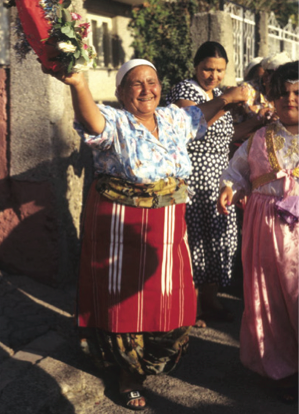
Roma, Europe’s largest ethnic minority, have long been revered internationally for their folk music—but reviled as an “inferior” subculture.
Roma, Europe’s largest ethnic minority, have long been revered internationally for their folk music—but reviled as an “inferior” subculture.
Romani music—Gypsy music—was put on the world’s stage during Madonna’s 2009 summer tour, when the American pop star performed a fusion of Romani music to an enthusiastic audience. But when she went on to bemoan the plight of the Gypsies, this elicited boos from 60,000 Romanian fans, thus exposing the dichotomy—“loved for their music, hated as people.”

So states UO anthropologist and folklorist Carol Silverman, who recounts this episode in her new book, Romani Routes (Oxford University Press). The book builds on Silverman’s decades-long involvement with Roma, beginning in the early 1970s when she was an undergraduate at City University of New York.
As a singer and dancer, Silverman was inspired to make annual pilgrimages to Eastern Europe to attend Romani celebrations and folk festivals. Along the way, she learned Balkan languages, studied the politics and immersed herself in Romani culture in the Balkans and in the United States, pursuing this passion as an anthropologist and a scholar.
Her new book looks closely at Romani music and culture, primarily in the Balkans, from the 1970s to the present—tracing the impact of socialism, its ultimate fall and the current challenges of rising antimigrant sentiments, deportations and physical attacks. It explores Roma in their communities and in the world music scene, while also investigating how they have migrated to seek better economic opportunities and escape discrimination.
Roma have lived in the Balkans for more than 600 years, originally migrating from India, yet have always remained “perpetual outsiders as a people but insiders in terms of music and culture,” Silverman said. Today’s Roma population in Europe is estimated at 12 million.
“This book is about thirty years of my heartfelt research,” said Silverman, a 2010 Guggenheim Fellow. Her aim, she says, is to “de-exoticize Roma”—in other words, to challenge the well-worn stereotypes. “Roma are also doctors, lawyers, activists and teachers—no different than any other people,” she said.
Purchasers of her book also get access to a password-protected companion website that contains more than 100 videos, audio segments, photographs, song texts and other supplementary materials.





 While reviled as a people, the Roma of Eastern Europe are revered for their music.
While reviled as a people, the Roma of Eastern Europe are revered for their music.

